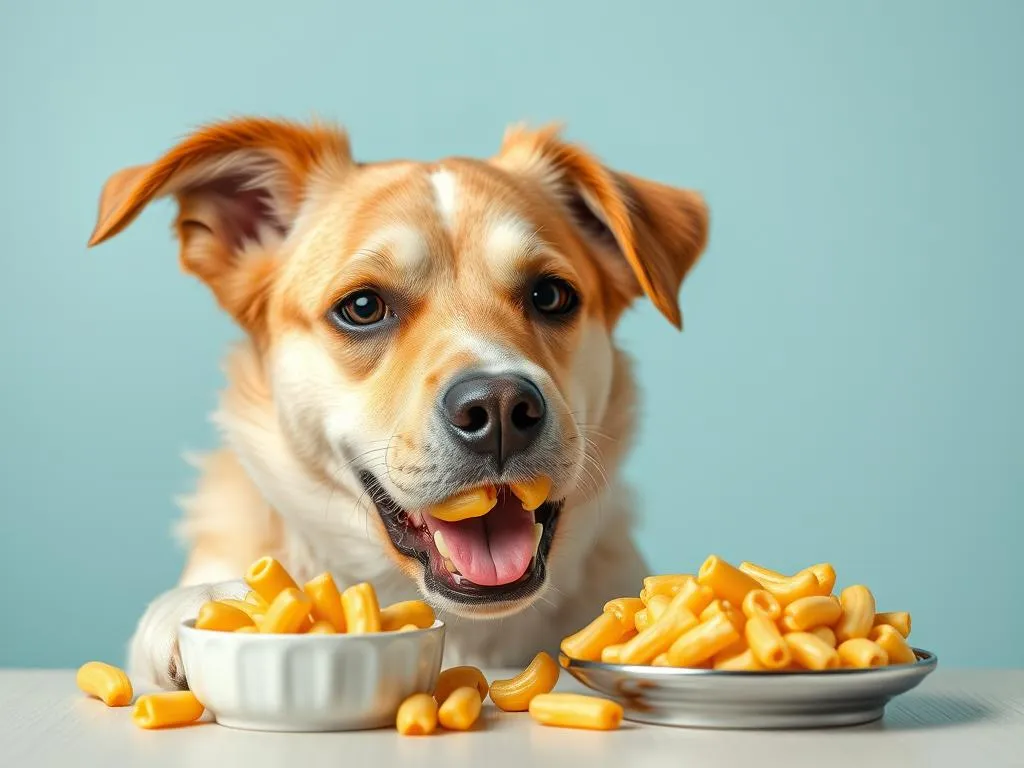
Introduction
As a responsible pet owner, understanding dog nutrition is crucial for maintaining your furry friend’s health and well-being. A balanced diet plays a significant role in ensuring that your dog remains active, happy, and free from health issues. With so many human foods available, it’s common to wonder about their safety for dogs. One question that often arises is: Can dogs eat mac and cheese?
In this article, we will delve into the nutritional needs of dogs, explore the appeal and nutritional value of mac and cheese, assess its safety for canine consumption, and provide healthier alternatives. Additionally, we will highlight signs of dietary issues and when to consult a veterinarian regarding your dog’s diet.
Understanding Dog Nutrition
Basic Nutritional Requirements
Just like humans, dogs require a balanced diet that includes a mix of proteins, fats, carbohydrates, vitamins, and minerals. Each of these components plays a vital role in their overall health:
- Proteins: Essential for growth, repair, and maintenance of body tissues. High-quality protein sources include meat, poultry, fish, and legumes.
- Fats: Provide energy and help absorb certain vitamins. Healthy fats can be found in fish oils and animal fats.
- Carbohydrates: Serve as a source of energy and aid in digestion. Common sources include grains, vegetables, and fruits.
- Vitamins and Minerals: Vital for various bodily functions, including immune response, bone health, and overall metabolic processes.
Common Dog Food Ingredients
When it comes to dog food, not all ingredients are created equal. Here’s a quick overview of safe ingredients and those you should avoid:
- Safe Ingredients: Chicken, beef, fish, brown rice, sweet potatoes, carrots, and blueberries.
- Ingredients to Avoid: Chocolate, onions, garlic, grapes, raisins, avocados, and any artificial sweeteners like xylitol.
Understanding these components and ingredients helps in making informed decisions about what to feed your dog.
The Appeal of Mac and Cheese
Popularity Among Humans
Mac and cheese is a beloved comfort food for many people worldwide. Its creamy, cheesy goodness and ease of preparation make it a staple in many households. Whether enjoyed as a quick meal or a side dish at family gatherings, it’s a dish that evokes nostalgia and warmth.
Nutritional Value of Mac and Cheese
While mac and cheese may be popular among humans, it’s essential to analyze its nutritional breakdown before considering it for your dog. Here’s a general overview of what’s typically found in a serving of mac and cheese:
- Calories: Approximately 300-400 calories per serving
- Fats: 15-20 grams, depending on the cheese and butter used
- Carbohydrates: 30-40 grams
- Protein: 10-15 grams
Common ingredients in mac and cheese include pasta, cheese, milk, butter, and sometimes additional seasonings or preservatives. It’s essential to evaluate whether these components align with your dog’s nutritional needs.
Can Dogs Eat Mac and Cheese?
Assessing Safety
Now we arrive at the crux of the matter: Can dogs eat mac and cheese? The answer isn’t straightforward. While mac and cheese is not toxic to dogs, certain ingredients may pose risks. Let’s break down the primary components:
- Pasta: Generally safe in small amounts, but it provides little nutritional value.
- Cheese: While many dogs enjoy cheese, it’s high in fat and lactose. Not all dogs can digest lactose effectively.
- Milk and Butter: Both are dairy products that can contribute to lactose intolerance issues.
- Additives and Preservatives: Some pre-packaged mac and cheese varieties may contain harmful additives.
Potential Risks
Feeding your dog mac and cheese can come with several risks:
- Lactose Intolerance: Many dogs are lactose intolerant, meaning they lack the enzyme needed to digest lactose. Symptoms may include diarrhea, vomiting, and stomach discomfort.
- High-Fat Content: Regularly feeding high-fat foods can lead to obesity and pancreatitis, a serious condition that requires veterinary intervention.
- Additives and Preservatives: Some commercially prepared mac and cheese may include ingredients that are harmful to dogs.
It’s essential to consider these potential risks before offering mac and cheese as a treat.
Healthier Alternatives to Mac and Cheese
Dog-Friendly Homemade Recipes
If your dog loves cheesy flavors, there are healthier alternatives to traditional mac and cheese. Here are some simple recipes using safe ingredients:
Cheesy Sweet Potato Mash
- Ingredients:
- 1 medium sweet potato
- 1/4 cup shredded cheese (like cheddar)
-
1 tablespoon olive oil
-
Instructions:
- Boil or steam the sweet potato until tender.
- Mash it with olive oil and mix in the cheese until melted.
- Allow it to cool before serving.
Cheesy Rice and Chicken
- Ingredients:
- 1 cup cooked brown rice
- 1/2 cup shredded cooked chicken
-
1/4 cup low-fat cheese
-
Instructions:
- Mix the cooked rice and chicken in a bowl.
- Stir in the cheese until melted.
- Serve once cooled.
These recipes can provide your dog with a safe and tasty alternative to mac and cheese.
Store-Bought Dog Treats
If cooking isn’t your thing, many store-bought cheese-flavored dog treats are designed specifically for canine consumption. Look for options that are low in fat and made from natural ingredients. Always check the label for safety and nutritional value.
When to Consult a Veterinarian
Signs of Dietary Issues
After introducing any new food into your dog’s diet, it’s essential to monitor them closely. Some signs of dietary issues may include:
- Vomiting
- Diarrhea
- Lethargy
- Loss of appetite
- Excessive gas or bloating
If you notice any of these symptoms after your dog consumes human food, it’s advisable to consult with your veterinarian.
Long-term Effects of Poor Nutrition
Poor nutrition can lead to various long-term health issues, including obesity, diabetes, and heart disease. Regular veterinary check-ups are crucial for monitoring your dog’s health and ensuring they maintain a balanced diet tailored to their specific needs.
Conclusion
In summary, while dogs may not be able to safely enjoy mac and cheese in the same way humans do, understanding the intricacies of dog nutrition is vital for their health. The potential risks associated with feeding dogs mac and cheese, such as lactose intolerance and high-fat content, make it less than ideal as a treat. Instead, consider healthier alternatives that can satisfy your dog’s taste buds without compromising their health.
Always prioritize your dog’s nutritional needs and consult a veterinarian if you have any concerns. By being informed and proactive about your pet’s diet, you can ensure their happiness and well-being for years to come.
FAQs
Can all dogs eat mac and cheese?
Not all dogs can safely eat mac and cheese due to potential lactose intolerance and high-fat content. It’s best to assess each dog individually.
What should I do if my dog ate mac and cheese?
Monitor your dog for any signs of distress, such as vomiting or diarrhea. If symptoms arise, consult your veterinarian.
Are there any benefits to dogs eating cheese?
In moderation, cheese can be a good source of protein and calcium for dogs, but it should be fed carefully due to its fat content and potential lactose issues.
How can I ensure my dog has a balanced diet?
Provide high-quality dog food that meets their nutritional needs, incorporate safe fresh fruits and vegetables, and consult your veterinarian for personalized advice.









